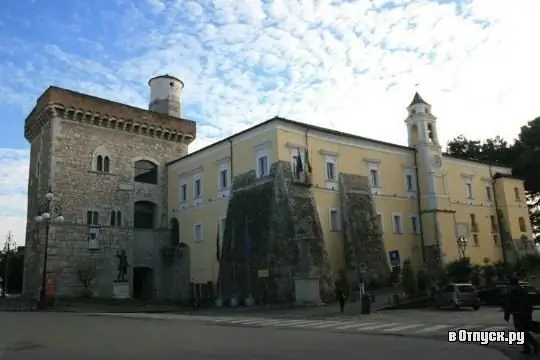
Description of the attraction
Rocca dei Rettori, also known as Castello di Manfredi, is a castle in the town of Benevento in the Italian region of Campania, now occupied by the Samnite Museum.
Archaeological excavations carried out here in 1998 in the course of restoration work proved that this area was used even in prehistoric times. In particular, a necropolis of the 7-6th centuries BC was discovered here. with numerous Samnite graves. Around the 4th century BC. The Samnites built a bastion on the site of the present castle and were the first to use this place for defensive purposes. But the Romans built a bath here, known as the Castellum Aquae, for which water was supplied from the Serino River using an aqueduct. The Lombards who replaced them appreciated the strategic location of the place and erected the eastern wall of the castle here. In the 8th century, a Benedictine monastery was founded on this site, which later, during the reign of the Duke of Benevento Arekis II, was connected to the castle (or fortified place). In the 11th century, the entire structure was significantly expanded, but later it was partially abandoned. Only in 1321, Pope John XII asked the ruler of Benevento, William di Balaeto, to restore the building and make it the residence of the papal governors ("rettori"). On this occasion, the monks were transferred to the monastery of San Pietro. At the same time, the modern name of the castle appeared - Rocca dei Rettori. In the 16th century, Rocca was expanded again and was used as a prison for nearly three centuries (up to 1865).
Rocca dei Rettori is located in the highest part of the historic center of Benevento. The current appearance of the castle is the result of numerous reconstructions and restorations carried out over the centuries. In fact, it consists of two buildings: the large Torrione tower, built by the Lombards, and the so-called Palazzo dei Governatori Pontifichi. Torrione is about 28 meters high and is the only surviving part of the original defensive structure. It was restored in the 15th century and features double vaulted windows and a terrace with two turrets. Palazzo dei Governatori Pontifichi (Palace of the Pope Governors) is rectangular in shape with the main entrance on the east side. The palace itself consists of three floors and a courtyard, and a large staircase leads to the garden, which displays a collection of plates from the ancient Trajan road and other architectural elements from the period of Ancient Rome. There you can also see a sculpture of a lion made in 1640 in honor of Pope Urban VIII using richly decorated ancient Roman fragments.






